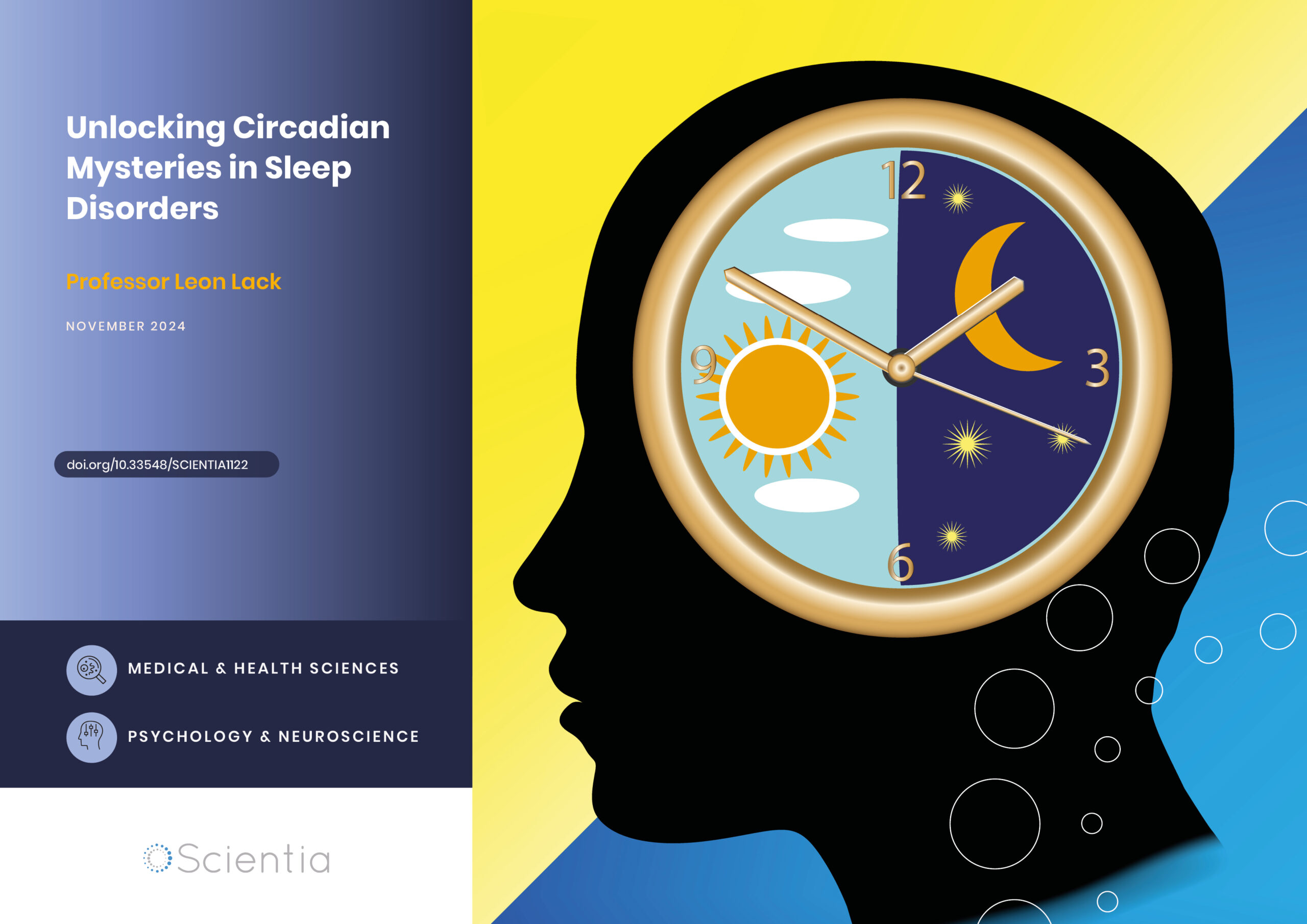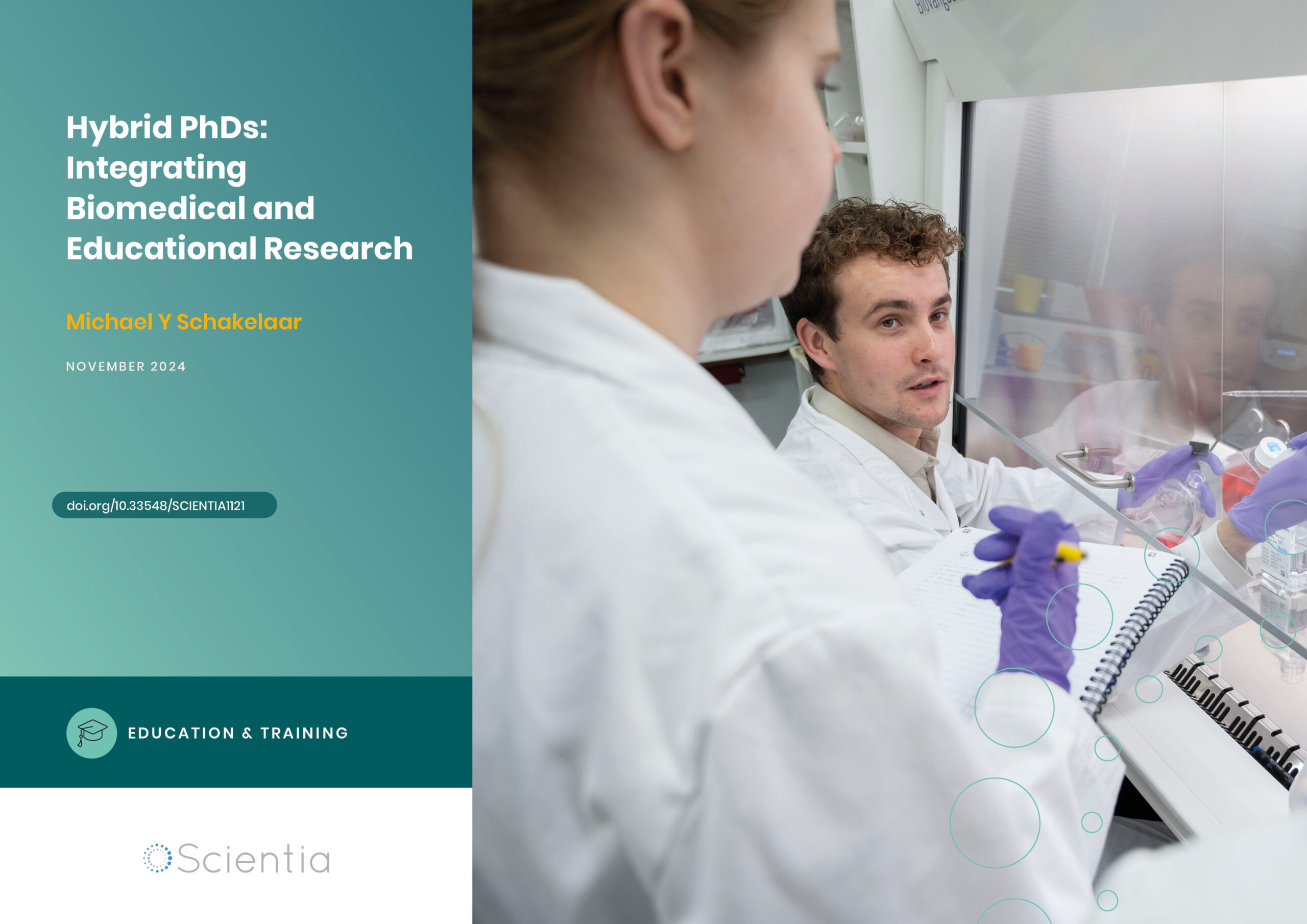Dr Zachary Senwo – Microbes: Agriculture’s Microscopic Helpers
Climate change and environmental degradation are increasingly threatening our ability to feed a burgeoning human population. Switching to agricultural practices that support beneficial soil microbes, and thus healthy soils, may help farmers achieve the yields required for continued food security. Dr Zachary Senwo from the College of Agriculture, Life and Natural Sciences at Alabama A&M University has spent over two decades exploring how agricultural management practices impact soil health. In an extensive new project, his team is investigating soil nitrogen cycling and the role of microbes in soil health.
Feeding a Growing Population
Many people across the globe struggle to feed themselves and their families. According to the United Nations World Food Program, 690 million people go to bed on an empty stomach each night. One in three people suffer with some form of malnutrition, including 150 million children worldwide. With the global human population predicted to reach 9 billion by 2050, crop yields will need to almost double to produce enough nutritious food to keep up with demand.
The intensive agricultural practices developed over the last few decades have helped us reach the high yields achieved today. However, these same practices have a myriad of negative consequences for the surrounding ecosystems. Chemical fertilisers leach into soils and waterways, disrupting the natural systems that help support productive farming. Pesticides affect beneficial insects as well as targeted pest species. Tillage, which involves turning the soil to reduce weeds, along with increased chemical inputs alter the natural soil communities that support good soil health and plant growth.
Unsustainable farming practices such as these ultimately lead to a breakdown in natural processes. Eventually, no matter how much extra fertiliser is added or how well pests are controlled, the same crop yields cannot be achieved, as evidenced by the incidence of ‘yield gaps’ – where farms fail to achieve the best observed yields for the region.

Working with Nature
To solve these problems, scientists and farmers are increasingly focused on developing strategies that work with, rather than against, the natural environment. The help we need may come in the smallest of packages. Soil microbes – the bacteria, fungi, and viruses that exist naturally in the soil – support plant health and growth through their important roles in nutrient cycling, breaking down organic matter, creating humus, soil structure, fixing nitrogen, promoting plant growth and development, and controlling pests and diseases. These vast and invisible microbial communities have evolved alongside plants for millennia, helping them to withstand harsh environmental conditions.
Dr Zachary Senwo from Alabama A&M University has devoted more than two decades to researching soil microbiology and biochemistry. By examining the intricate relationships between plants and microbial communities, and how enzymes produced by microbes cycle nutrients in soils, he aims to contribute to the development of sustainable, effective agricultural management practices.
In his latest extensive research project, Dr Senwo and his team are examining nitrogen cycling in agricultural systems. As nitrogen is a key nutrient required for plant growth, and a main component in many chemical fertilisers, a better understanding of how to sustainably optimise the amount of usable nitrogen in soils will help to inform agricultural management strategies that improve both yields and environmental outcomes.

Promoting Nutrient Cycling with Microbes
Plant growth and development are typically limited by the amount of available nutrients, such as nitrogen, phosphorous, and sulphur. Although nitrogen exists in large quantities in the air, few plants can use it in this form. Instead, plants rely on mineral nitrogen from soils, in the form of ammonium or nitrate. However, much of the nitrogen contained in soils are derived from decaying plant and animal matter, and mainly ‘organic’ – or carbon-containing – amino acids and amino sugars. And this is where the soil microbial communities really shine.
Soil microbes produce a range of enzymes which help to turn organic nitrogen sources into plant-available mineral nitrogen through the process of mineralisation. By examining the activities of six soil enzymes involved in nitrogen cycling and four involved in carbon cycling, Dr Senwo demonstrated how the activities of certain enzymes can be reliable indicators of the amount of nitrogen mineralisation in soils. Thus, the activities of these enzymes could provide crop growers with valuable early feedback on how soil management practices, such as adding inorganic or organic materials to alter soil pH, are affecting soil health.
Promoting natural nitrogen mineralisation by adopting practices that support soil microbial communities could enable crop producers to maintain yields while also reducing the input of chemical fertilisers. Many crop farmers, particularly organic farmers, have already moved to more sustainable and environmentally friendly soil fertilisation options. Poultry litter – a mix of manure, spilled feed and bedding, and feathers from domestic fowl – provides an inexpensive and efficient additive to increase soil nutrients. However, concerns exist that even the addition of natural fertilisers like these could contribute to nutrient leaching if over-applied.
In his research, Dr Senwo discovered that phosphorous and nitrogen from poultry litter accumulates in soils. However, repeated applications of poultry litter accelerated the transformation of amino compounds into usable nitrogen sources. ‘The accumulation of organic and inorganic nutrients in soils stimulates microbial growth and activities and therefore, enzyme synthesis,’ explains Dr Senwo. This suggests that evaluating the long-term impacts of using poultry litter as an organic fertiliser requires predictions based on cumulative amounts added, rather than annual input rate or years of application.
Agricultural systems already affected by intensive management practices may require additional measures to restore proper function. Commercially available enzymes could help to restore nutrient balance and prevent further leaching in over-fertilised soils. However, as with other enzymes, their activities are sensitive to other conditions, such as temperature, pH, and the presence of metal compounds.
Dr Senwo and his colleagues examined the activities of three nitrate-reducing enzymes, obtained from a plant, a fungus, and a bacterium, in the presence of a range of different metals. Because metal compounds are a natural component of soils, a better understanding of enzyme – metal interactions could help to inform strategies to reduce excess nitrates on farmlands.
‘Organic growers will benefit tremendously from systems that integrate cultural, biological and mechanical practices promoting resource recycling, ecological balance and biodiversity conservation.’

Sustainable Improvement of Nitrogen Cycling
For his current research project on nitrogen cycling in agricultural soils, Dr Senwo has teamed up with scientists from organisations across the USA. ‘This project enables strengthening integrative, multidisciplinary research for improved understanding of nitrogen cycling in agricultural soils, integrating biochemical and molecular techniques to detect microbes, delineate, predict and manage soil nitrogen in agricultural soils, and increasing the number of trained professionals, especially African-Americans, engaged in research, teaching and management of renewable resources,’ says Dr Senwo.
The team is examining soil nitrogen cycling with relation to nitrogen compositions – or the relative amounts of organic and inorganic nitrogen in agricultural soils, the mineralisation and other transformation processes that increase the amount of plant-available nitrogen, plant uptake of nitrogen, and the production of enzymes related to nitrogen cycles in organic fertilisers and soils. ‘Nutrient cycles are excellent models to test agricultural sustainability, being an inherent component for production and economic success,’ says Dr Senwo.
In addition to their thorough research objectives, Dr Senwo and his team are providing research support to small-scale organic farmers. Although organic farming is gaining traction, farmers have indicated a general lack of knowledge in organic production techniques. Even the common methods used to assess soil nitrogen levels have been based primarily on conventional fertilisers, limiting their efficacy in farming systems relying on organic nitrogen sources and natural mineralisation processes. More sophisticated tools are desperately needed to assess nitrogen availability and improve nitrogen uptake by crops on organic farms.
‘Agricultural producers cannot be competitive if they do not have access to research data backed by a strong extension support,’ says Dr Senwo. ‘Organic growers will benefit tremendously from systems that integrate cultural, biological and mechanical practices promoting resource recycling, ecological balance and biodiversity conservation.’

To achieve their research objectives, Dr Senwo and his team are collecting samples from agricultural fields using a range of management practices, including both conventional and organic farms. They have also included tropical agricultural ecosystems by forging connections with growers from overseas. Because environmental conditions affect the compositions and functions of microbial communities, a better understanding of how these processes work in diverse ecosystems across the world will help improve food security beyond the USA.
A key aim of Alabama A&M University is to contribute to solving environmental and agricultural issues by producing well-trained and qualified graduates. Dr Senwo’s research project builds on an excellent educational framework by providing further opportunities for undergraduate and graduate students to gain valuable experience while contributing to real-world research. The experience that the students gain in soil microbiology and molecular techniques will equip them for future research in microbial ecology.
Dr Senwo and his team envision this project will facilitate an upgrade to the soil and environmental sciences programs at Alabama A&M University, and many aspects of the project may contribute to other research programs within the university. The team plans to evaluate the project progress each year, offering ideas for improvements for subsequent years.
‘Furthermore, we intend to use our results acquired with the study as a springboard for future studies investigating additional or alternative agricultural management practices which will provide economic, social and environmental sustainability,’ says Dr Senwo. With climate change and other environmental problems making it increasingly difficult for farmers to meet food demands, thorough and reliable research to inform sustainable agricultural practices may be our only hope for ensuring food security for generations to come.
Reference
https://doi.org/10.33548/SCIENTIA562
Meet the researcher

Dr Zachary N. Senwo
Department of Biological & Environmental Sciences
College of Agricultural, Life and Natural Sciences
Alabama Agricultural and Mechanical (A&M) University
Normal, AL
USA
Dr Zachary N. Senwo received his BSc from University of Georgia, MSc from Alabama A&M University and PhD in Soil Microbial Biochemistry and Chemistry from Iowa State University, focusing on biochemistry and chemistry of nitrogen cycles in agricultural and metals-enriched soils. He also received a Certificate in Global Health from the Sparkman Center for Global Health at the University of Alabama, Birmingham. Dr Senwo currently holds the position of Professor in the College of Agricultural, Life and Natural Sciences at Alabama A&M University. His main research areas include enzymatic and microbial processes in soils; exploring and developing novel methods for soil enzymes catalysis; soil microbial communities’ response to varying land disturbances and climatic changes; metal/non-metal inhibition of enzymes; chemical partitioning and bioreduction of soil metals; and harnessing fungi’s enzymatic potentials in bioenergy and bio-based fuel research. He has published over 150 research articles in peer-reviewed journals, and has been invited to present his work and host workshops at over 80 academic events across the world. Dr Senwo also devotes time to teaching a range of undergraduate and graduate courses and supervising graduate students. In 2019, he was a Fulbright Scholar to Kenya on tropical agroecology and sustainability. Additionally, Dr Senwo successfully developed and launched study abroad research and academic programs with institutions in countries across the globe.
CONTACT
E: zachary.senwo@aamu.edu
W: https://www.agrilinks.org/users/znsenwo
KEY COLLABORATORS
Dr Terrence Gardner, Soil and Environmental Microbial Ecology, North Carolina State University, Raleigh, North Carolina
Dr Zhongqi He, USDA-ARS Southern Regional Research Center, Commodity Utilization Unit, New Orleans, Louisiana
Dr Verónica Acosta-Martínez, USDA-ARS, Cropping System, Wind Erosion and Water Conservation Research Unit, Lubbock, Texas
Dr Priscilla Mfombep, HTTTC-Kumba, University of Buea, Cameroon
FUNDING
USDA – National Institute of Food and Agriculture
FURTHER READING
TG Gardner, ZN Senwo, Enzymatic hydrolysis of an organic sulfur compound, Advances in Enzyme Research, 2019, 7, 1.
IA Tazisong, ZN Senwo, Z He, Phosphatase hydrolysis of organic phosphorus compounds, Advances in Enzyme Research, 2015, 3, 39.
FA Ntoko, ZN Senwo, Nitrate reduction by commercially available nitrate reductases: Bio-catalytic potentials and enzymatic activities in the presence of metals ions, Journal of Environmental Science and Health, Part A, 2012, 47, 2028.
PM Mfombep, ZN Senwo, OS Isikhuemhen, Enzymatic activities and kinetic properties of β–glucosidase from white rot fungi. Advances in Biological Chemistry, 2013, 3, 198.
PM Mfombep, ZN Senwo, Soil maltase activity by a glucose oxidase-perioxidase system, 3 Biotech, 2012, 2, 225.
TG Gardner, V Acosta-Martinez, Z Senwo, SE Dowd, Soil rhizosphere microbial communities and enzyme activities under organic farming in Alabama, Diversity, 2011, 3, 308.
MA Tabatabai, M Ekenler, ZN Senwo, Significance of enzyme activities in soil nitrogen mineralization, Communications in Soil Science and Plant Analysis, 2010, 41, 595.
Z He, IA Tazisong, ZN Senwo, CW Honeycutt, D Zhang, Nitrogen and phosphorus accumulation in pasture soil from repeated poultry litter application, Communication in Soil Science and Plant Analysis, 2009, 40, 587.
Z He, HW Dail, CW Honeycutt, MS Erich, ZN Senwo, Enzymatic quantification of phytate in animal manure, Communication in Soil Science and Plant Analysis, 2009, 40, 566.
IA Tazisong, ZN Senwo, Mercury concentration and distribution in soils impacted by long-term applied broiler litter, Bulletin of Environmental Contamination and Toxicology, 2009, 83, 291.
IA Tazisong, ZN Senwo, RW Taylor, Z He, Hydrolysis of organic phosphates by commercially available phytases: Biocatalytic potentials and effects of ions on their enzymatic activities, Journal of Food Agriculture Environment, 2008, 6, 500.

Want to republish our articles?
We encourage all formats of sharing and republishing of our articles. Whether you want to host on your website, publication or blog, we welcome this. Find out more
Creative Commons Licence
(CC BY 4.0)
This work is licensed under a Creative Commons Attribution 4.0 International License. 
What does this mean?
Share: You can copy and redistribute the material in any medium or format
Adapt: You can change, and build upon the material for any purpose, even commercially.
Credit: You must give appropriate credit, provide a link to the license, and indicate if changes were made.
More articles you may like
Dr Leon Lack | Unlocking Circadian Mysteries in Sleep Disorders
Sleep disorders can significantly disrupt daily life, but their underlying causes are not always clear. Dr Leon Lack from Flinders University has spent decades studying these disorders and how to treat them. By shedding light on the role of circadian rhythms in delayed sleep-wake phase disorder and non-24-hour sleep-wake rhythm disorder, he hopes to unravel why some people struggle to maintain conventional sleep patterns and could lead to more effective treatments for these challenging conditions.
Dr Praveen Cheekatamarla | Advancing Sustainable Energy Solutions and Energy Efficiency in Buildings
Buildings play a significant role in our global energy consumption, accounting for one-third of the total energy used worldwide. Unfortunately, they are also responsible for nearly 40% of carbon dioxide emissions generated annually. To combat climate change, address energy scarcity, and achieve net-zero carbon goals, focusing on sustainable renewable energy and energy-efficient building technologies is key. Dr Praveen Cheekatamarla of Oak Ridge National Laboratory is working with his colleagues to advance energy-efficient and decarbonisation technologies. Their work is critical in tackling these challenges and analysing innovative solutions.
Michael Y Schakelaar | Hybrid PhDs: Integrating Biomedical and Educational Research
Biomedical science-based PhDs are often research-focused, designed to hone a candidate’s expertise in a specific field. However, subsequent careers in university settings frequently entail substantial teaching responsibilities, with PhD graduates unprepared for the dual roles of researcher and educator. Hybrid PhDs aim to better equip graduates for academic careers by integrating highly specialised scientific knowledge with educational research. PhD candidate Michael Y Schakelaar of University Medical Center Utrecht (Utrecht University), The Netherlands, provides an outstanding example of how this can be achieved.
Dr Kenneth Cutbush | Freeing Frozen Shoulders: The 360° Release
A frozen shoulder can significantly impact a person’s well-being. The constant pain and ongoing stiffness can sometimes only be relieved with surgery. Expert orthopaedic surgeon Dr Kenneth Cutbush from St Andrew’s War Memorial Hospital in Brisbane, Australia, works tirelessly to help ease the suffering of patients with various shoulder problems. Alongside colleagues, he pioneers a minimally invasive surgical technique, the frozen shoulder 360° release.




